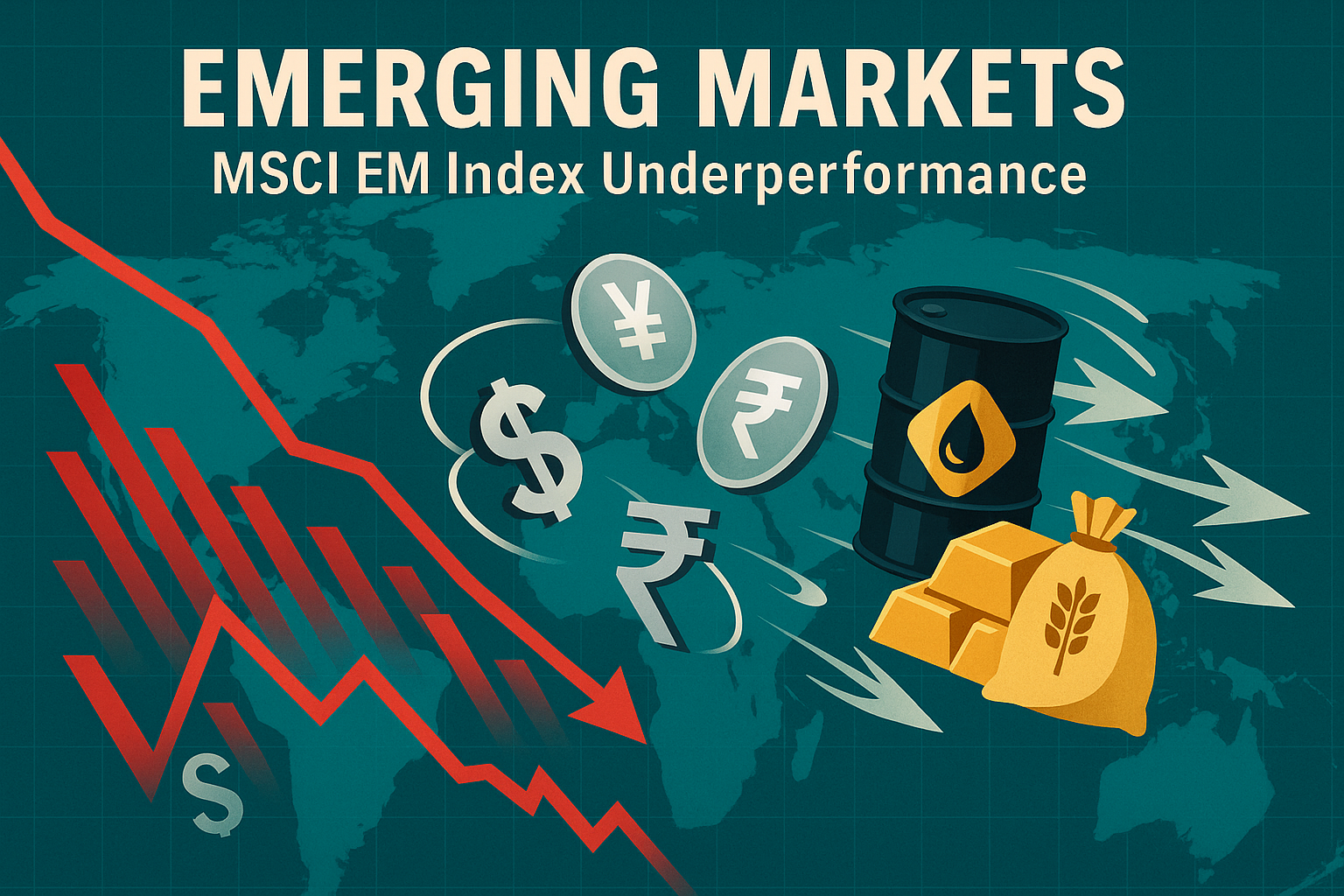Amid divergent central bank policies, the MSCI Emerging Markets Index has underperformed its developed-market peers—down 5.0% YTD versus the MSCI World’s –0.8% through April—offering investors deeper insight into currency volatility in emerging markets and commodity headwinds reshaping emerging market investments .
1. Divergent Monetary Policies & Emerging Markets
First, a clear policy split has taken shape. Advanced-economy central banks like the U.S. Federal Reserve have paused rate hikes, citing stickier-than-expected inflation and a resilient labor market. Meanwhile, several emerging-market peers have eased monetary policy: India’s Reserve Bank cut rates twice in early 2025 and signaled further easing to bolster growth . Consequently, the resulting interest-rate differential has exerted downward pressure on local currencies—an underappreciated drag on emerging market investments denominated in dollars.

2. Currency Volatility
Because capital chases higher yields, the MSCI EM Index performance is closely tied to exchange-rate movements. For instance, the Indian rupee plunged nearly 0.9% last week—despite a broadly softer dollar—driven by trade-tension fears and domestic rate cuts . Similarly, the South African rand has weakened amid commodity-price softness, compounding local-equity losses when converted back into U.S. dollars. Therefore, currency volatility magnifies market declines, as FX losses erode the local-currency gains of diversified emerging-market portfolios.
3. Commodity Headwinds Impacting Emerging Markets
Moreover, commodity headwinds have hit export-dependent economies. China’s industrial slowdown has driven down prices for iron ore, copper, and crude—core exports for Brazil, South Africa, and others. Indeed, Moody’s warns of “second-round” shocks to African banks stemming from slumping trade-finance fees and collateral values . As a result, the MSCI EM Index—which tilts toward commodity producers for roughly 20% of its weight—has struggled to find support even during global risk rallies.
4. Composition & Sector Effects
The MSCI EM Index’s concentration amplifies these trends. Technology giants such as TSMC and Tencent account for nearly 25% of the index weight, while commodity producers like Petrobras and Vale add another 20% . Hence, when tech-sector correlations spike alongside falling commodity prices, the index trails more balanced benchmarks. On the country front, China and Taiwan together represent over 40% of index capitalisation—therefore, any cyclical weakness in Greater China disproportionately impacts returns.
5. Investor Responses & Allocation Shifts
In response, global allocators are rotating away from broad emerging markets exposure. Over the three weeks to May 7, Asian-equity ETFs recorded $8.5 billion of inflows, whereas U.S.-focused equity funds suffered $43.5 billion of outflows—signalling a tactical pullback from EM beta into perceived safer havens . Meanwhile, dedicated local-currency bond funds have seen net inflows, as yield-seeking investors pivot toward fixed income amid equity volatility.
6. Credit Spreads & Macro Signals
Beyond equity, credit spreads in emerging markets have widened—Latin American sovereign spreads over U.S. Treasuries stand near multi-year highs—reflecting investor caution and higher borrowing costs . Accordingly, corporate bond issuance has slowed, and secondary market liquidity has thinned, further complicating portfolio construction for multi-asset EM strategies.
7. Policy Divergence: Looking Forward in Emerging Markets
Looking ahead, three key factors will likely dictate the MSCI EM Index trajectory:
- Further Rate Moves. Additional cuts by EM central banks (e.g., Indonesia, Brazil) could provide growth support but risk deeper currency losses.
- Commodity Rebound. A pickup in Chinese demand may lift raw-material prices, easing pressure on export-driven economies.
- China Rebalance. Beijing’s stimulus measures to revive growth could bolster local equities and improve investor sentiment across the region.